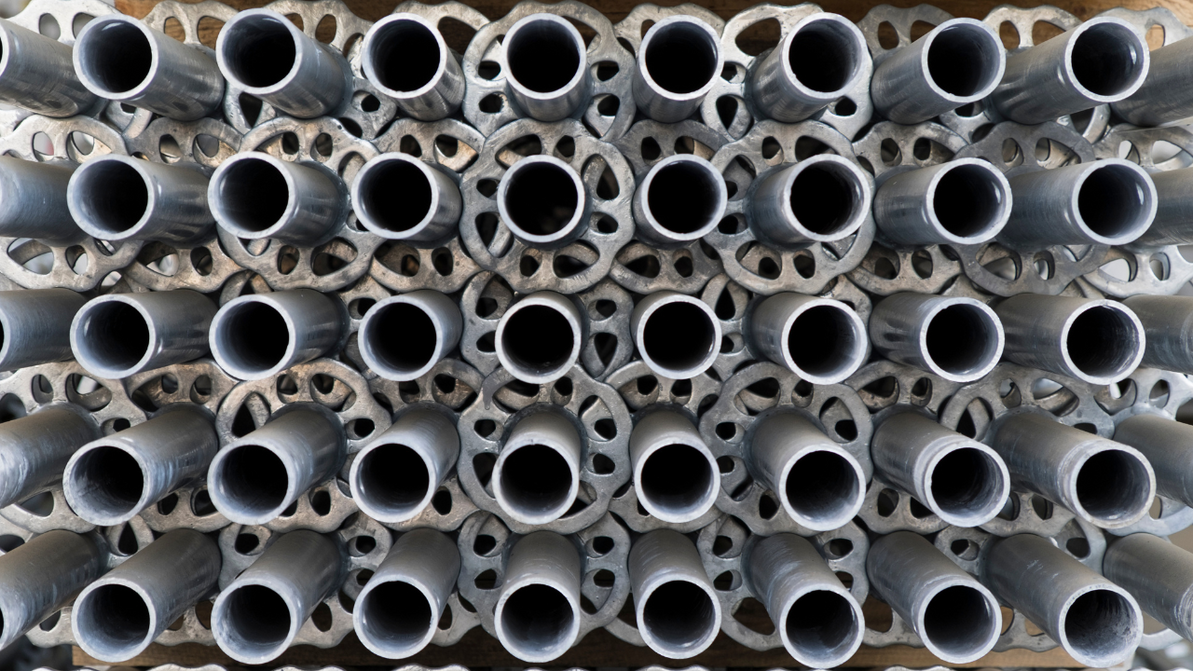Scaffold Beyond Construction
A fun etymology post connecting the word “scaffold” across disciplines
At Southwest Scaffolding, we're all about strong support systems, literally. But have you ever wondered why the word scaffold pops up in places far outside the jobsite? From high-stakes courtrooms to cutting-edge surgeries, “scaffold” shows up in some surprising spots. So let’s take a step up and explore the fascinating etymology and versatile usage of a word that, at its core, is all about support, structure, and transformation.
The Origin of "Scaffold"
The word scaffold dates back to Middle English, derived from the Old French eschaffaut, meaning a temporary platform or stage. It’s built from the roots “eschasse” (stilts) and “fald” (a structure or frame). Over time, it came to refer specifically to raised wooden platforms used in construction—or, more grimly, as a stage for public executions. Either way, a scaffold was a place where something big was about to happen.
Today, in the construction world, a scaffold is a vital temporary structure that provides safe access to high or otherwise unreachable places. But that idea, temporary support that allows something else to be built, fixed, or revealed, also shows up in other disciplines.
Scaffolds in Medicine: Building New Bodies
In medical science, scaffolds have taken on an exciting new life, especially in tissue engineering and regenerative medicine. Here, a scaffold refers to a 3D structure used to support the growth of new cells, tissues, or even entire organs. These biological scaffolds act as a framework, guiding the cells to form something functional, like a trellis for a vine.
This use of the word makes perfect sense: the structure is temporary, but essential. Once the tissue forms, the scaffold often dissolves or is absorbed by the body, leaving behind a newly rebuilt organ or tissue. Just like in construction, the scaffold does the heavy lifting while the real structure takes shape.
Scaffolds in Law: A Framework for Justice
Ever hear the term scaffold of justice or legal scaffolding? While it may not involve steel pipes or planks, the metaphor still holds up. In the legal world, the scaffold can refer to the structured framework of laws, regulations, and precedents that support a fair judicial system. In a darker historical context, scaffolds were the literal platforms used for public executions. However, in modern usage, legal scholars often talk about scaffolding as the foundational structure that holds up complex legal arguments, systems, or reforms. It’s all about the framework that supports higher ideals like order, rights, and justice.
Why It Matters (and Why It's Fun)
So why do all these fields borrow the word scaffold? Because no matter the application, the concept is the same: a temporary, supportive structure that makes it possible to build, heal, or deliver something greater.
For us in the construction industry, scaffolding is tangible, steel, aluminum, planks, and braces that help workers reach new heights safely. But the word also reflects something deeper: the idea that with the right support system in place, almost anything is possible.
The next time you hear someone in a lab or a courtroom mention a scaffold, know that they’re speaking the same language as a builder, one of structure, support, and transformation. At Southwest Scaffolding, we’re proud to be part of a long tradition of helping people reach new heights, physically and metaphorically.
Because no great structure, whether a high-rise, a heart valve, or a legal precedent, comes to life without a little scaffolding.
Recent Posts
-
Why Scaffolding Continues to Rank Among OSHA’s Top Violations
Scaffolding has consistently landed on OSHA’s Top 10 Most Frequently Cited Violations list for at le …Dec 23rd 2025 -
Scaffolding Rental vs. Turnkey Scaffolding Services: What Contractors Should Know Before Deciding
When you’re planning a project that requires scaffolding, one of the first decisions you’ll face is …Dec 19th 2025 -
Why Hiring a Professional Scaffolding Company Matters
Scaffolding is one of those things that people often underestimate—until something goes wrong. On pa …Dec 17th 2025




